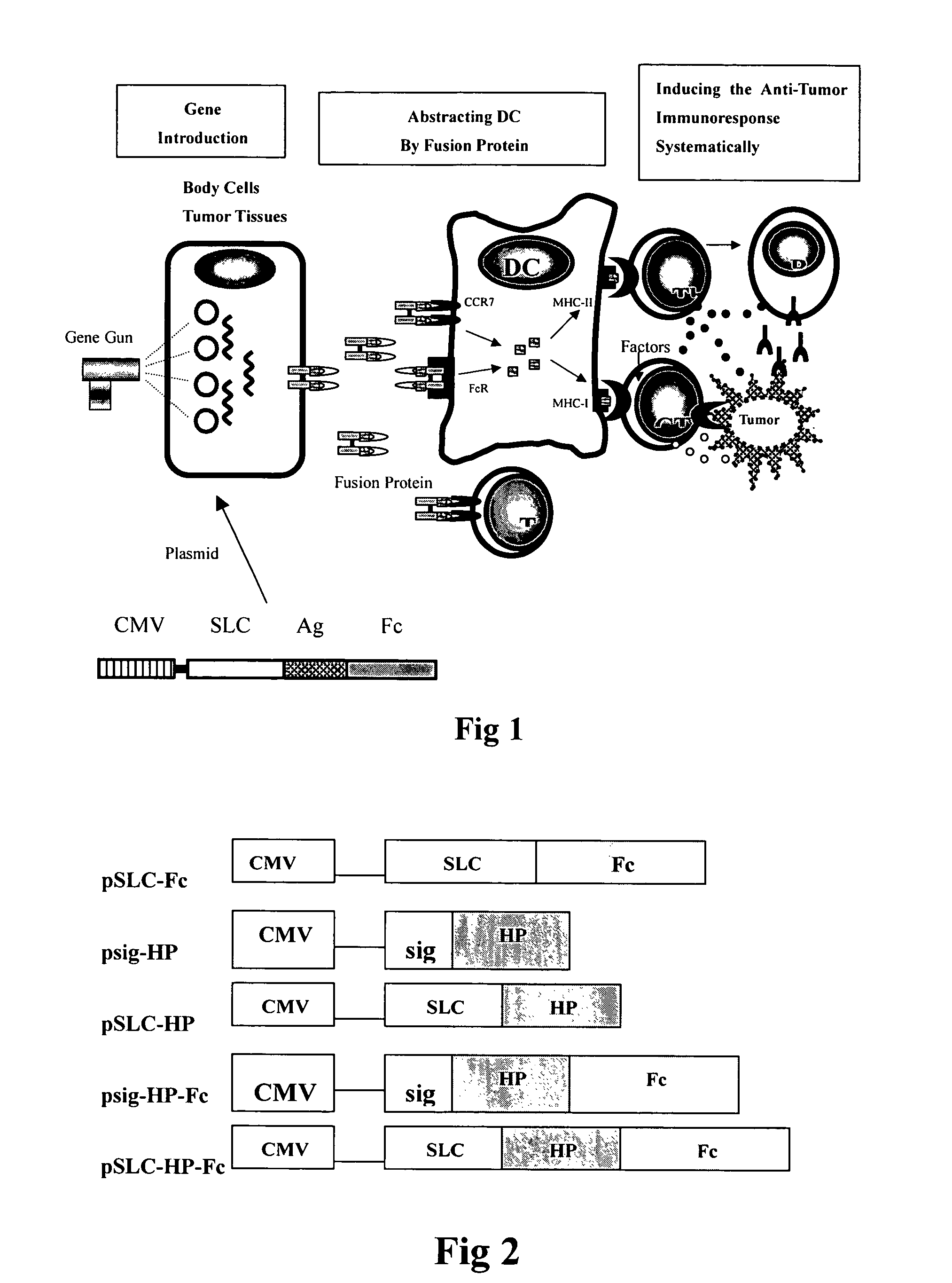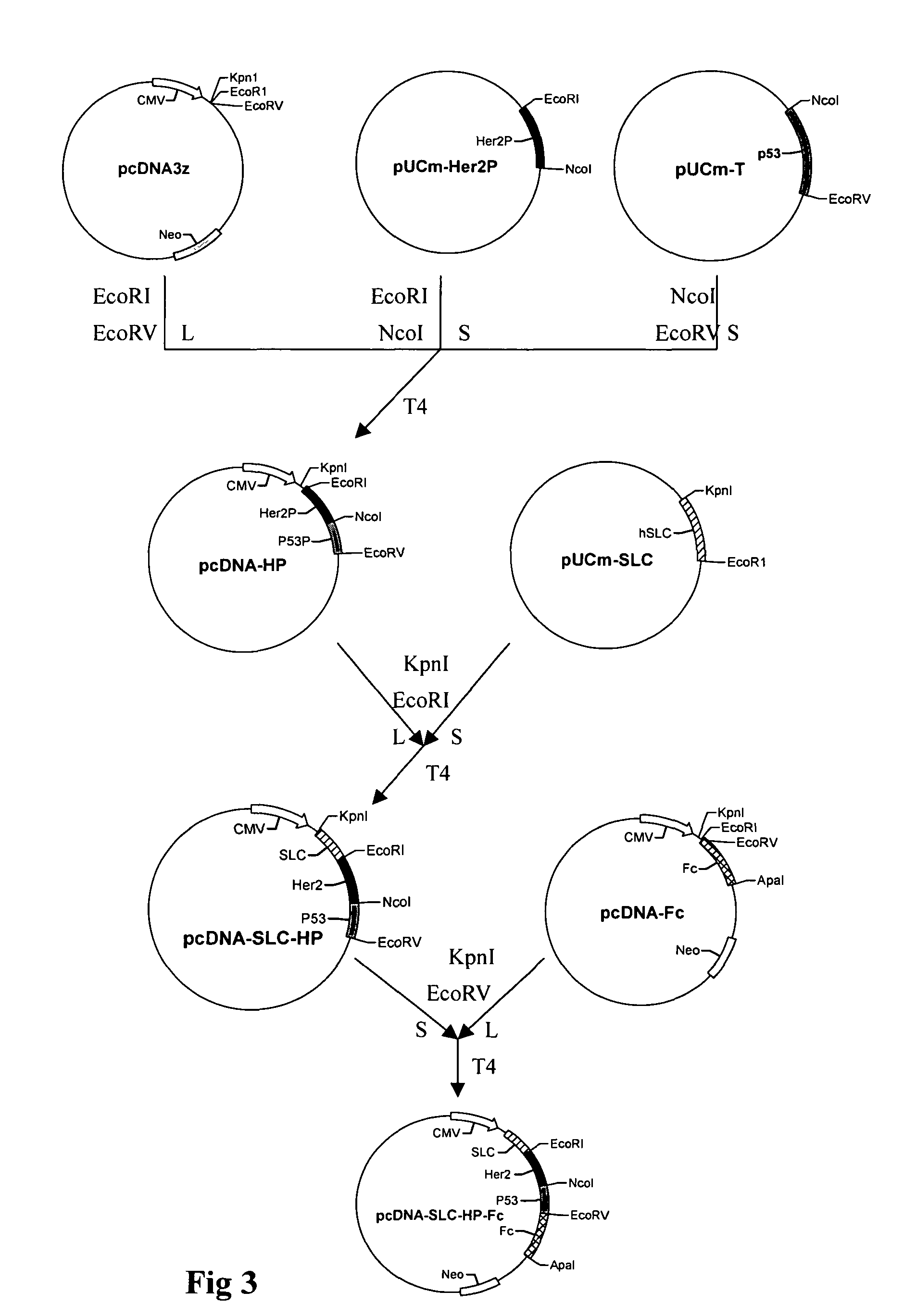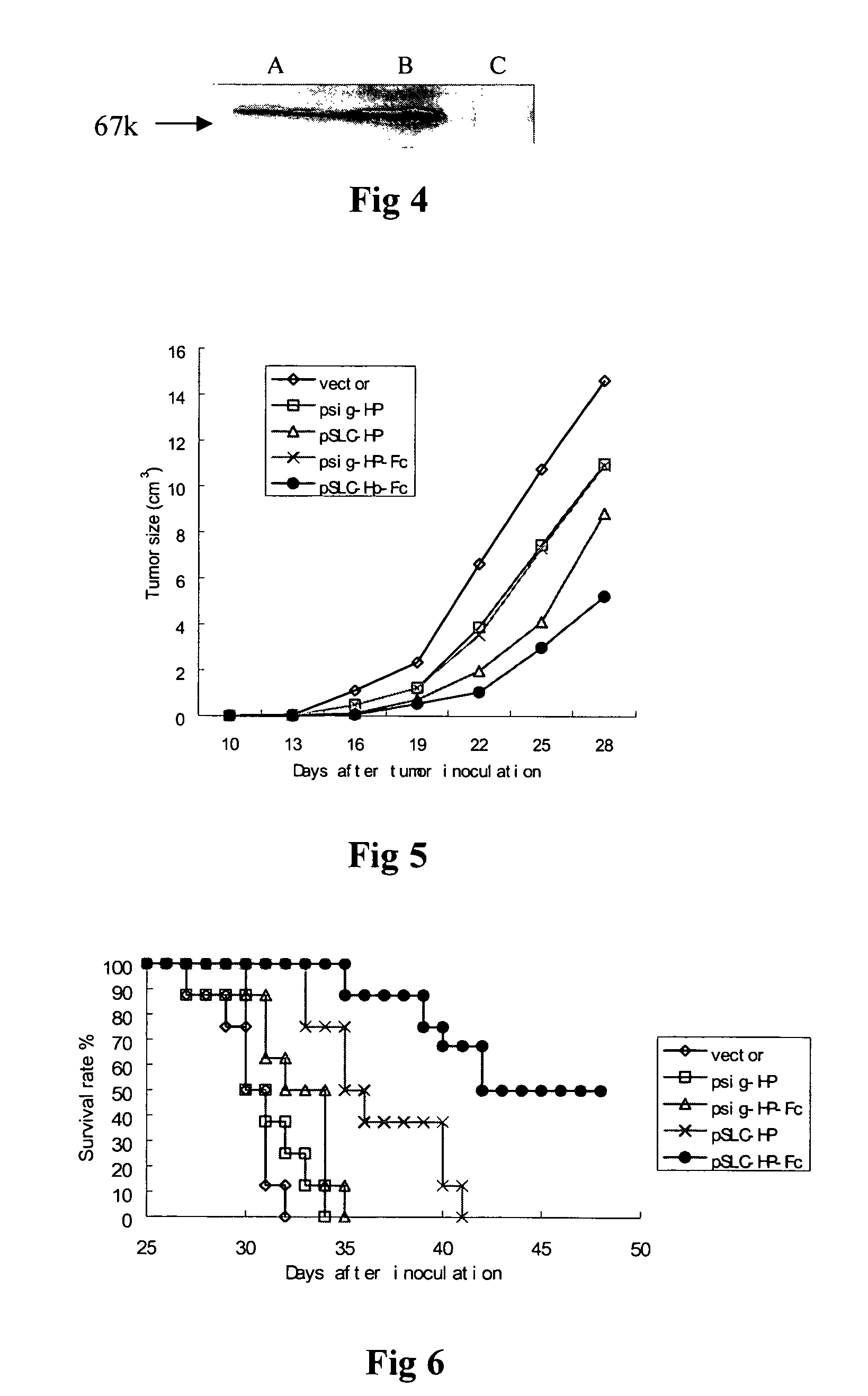Recombinant chemokine-antigen vaccine
a chemokine-antigen and recombinant technology, applied in the direction of immunological disorders, drug compositions, peptides, etc., can solve the problems of affecting the quality of vaccine production, increasing the complexity of vaccine production, and unable to achieve satisfactory results in anti-tumor immunity, so as to promote the secretion of cytokines, promote the development of th1, and high efficiency
- Summary
- Abstract
- Description
- Claims
- Application Information
AI Technical Summary
Benefits of technology
Problems solved by technology
Method used
Image
Examples
example
[0042]The mRNA was extracted from the lymph node of patients suffering from cancer. By using the methods well known for those skilled in the art, the KpnI restrictive endonuclease site was added to the SLC forward primer (5′-cggtaccacagacatggctcagtcac-3′) (SEQ ID NO: 14) and the sequence encoding three glycins and EcoRI restrictive endonuclease site was added to the SLC reverse primer (5′-tgaattctcctcctcctggccctttagg-3′) (SEQ ID NO: 15). The SLC gene was acquired by RT-PCR amplification. The acquired fragment was purified and inserted into pUCmT vector (pUC-SLC) for sequencing. The result shows that the sequence of the acquired fragment was in accordance with the designed sequence (the underlined fragment).
[0043]In this invention, sequencing of the PCR products was performed by using 377 DNA sequencer (ABI company) by four-colored fluorescence terminator sequencing method based on SANGER dideoxynucleotide chain termination method. The sequence from position ...
example 2
Preparation and Linkage of Her-2 / neu Gene
[0044]First, two fragments of Her-2 / neu gene were cloned by PCR method. The first fragment was acquired as follows: The used forward primer is 5′-agaattcaagatctttgggagcctggcatttctgggctacctgctcatcgctca c-3′ (SEQ ID NO: 16), having EcoRI restrictive endonuclease site, and the used reverse primer is 5′-gatgcccagcccttgca gggccagggcatagttgtc-3′ (SEQ ID NO: 17). The plasmid containing extra cellular segment of neu gene was adopted as template and the fragment corresponding to amino acid sequence from position 82 to position 115 was amplified, wherein the amino acid V at position 103 was replaced by amino acid L. The second fragment was acquired as follows: the forward primer was 5′-ctgcaagggctgggcatc-3′ (SEQ ID NO: 18), and the reverse primer having NcoI restrictive endonuclease site was 5′-tccatggcccggttggcagtgtggag-3′ (SEQ ID NO: 19). The fragment corresponding to amino acid sequence from position 445 to position 499 was amplified.
[0045]The two P...
example 3
[0047]A 402 bp gene fragment encoding the amino acids from position 156 to position 289 in p53 protein was cloned from the plasmid containing the whole length of p53 gene. The primers used were as follows: forward primer with one NcoI restrictive endonuclease site was 5′-acc atg gcc atc tac aag cag tca cag cac atg ac-3′ (SEQ ID NO: 20); reverse primer with one EcoRV restrictive endonuclease site was 5′-tga tat ctt tct tgc gga gat tct ctt c-3′ (SEQ ID NO: 21). The obtained fragment was inserted into pUCmT vector (pUC-p53P) for sequencing. The result indicates that the sequence of the obtained fragment is in accordance with the expected sequence (the underlined segment).
[0048]The result is indicated in SEQ ID NO: 5, wherein the sequence from position 39 to position 445 is the sequence of the inventive fragment.
PUM
| Property | Measurement | Unit |
|---|---|---|
| pore size | aaaaa | aaaaa |
| three-dimensional structure | aaaaa | aaaaa |
| structure | aaaaa | aaaaa |
Abstract
Description
Claims
Application Information
 Login to View More
Login to View More - R&D
- Intellectual Property
- Life Sciences
- Materials
- Tech Scout
- Unparalleled Data Quality
- Higher Quality Content
- 60% Fewer Hallucinations
Browse by: Latest US Patents, China's latest patents, Technical Efficacy Thesaurus, Application Domain, Technology Topic, Popular Technical Reports.
© 2025 PatSnap. All rights reserved.Legal|Privacy policy|Modern Slavery Act Transparency Statement|Sitemap|About US| Contact US: help@patsnap.com



